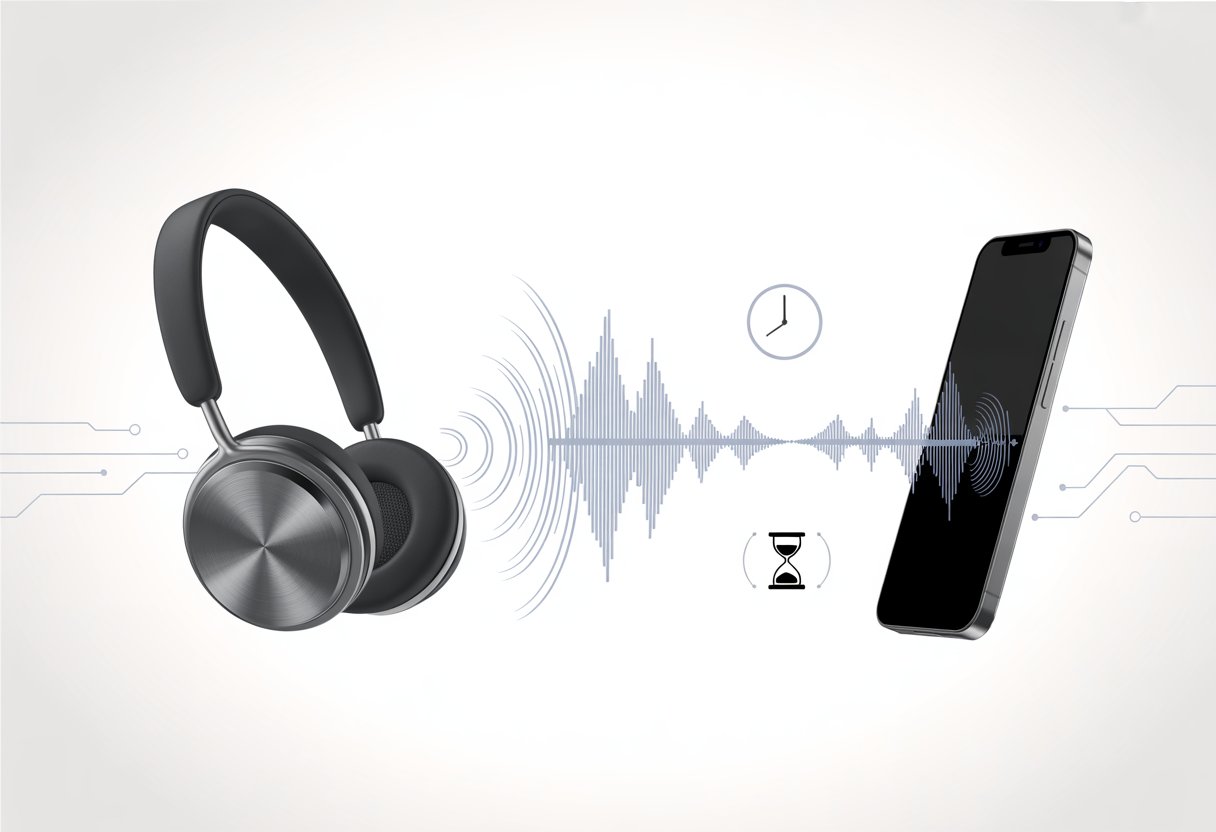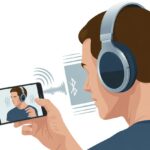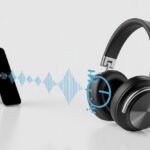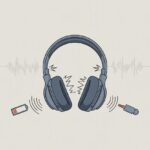Ever tried watching a movie with Bluetooth headphones and noticed the actor’s lips are moving like they’re auditioning for a badly dubbed kung fu film? We’ve all been there—just waiting for the sound to finally catch up with the action.
Bluetooth headphones lag because the audio signal takes a bit of time to travel from your device, through the air, and then get decoded by the headphones.

It’s almost like our music or favorite shows have to survive a weird little obstacle course before they reach our ears. People call this pause “audio latency,” and it pops up because Bluetooth needs to compress, send, and then decode the sound.
Even the apps we use sometimes try to keep things in sync by adding their own tweaks, just to make sure things don’t get too weird. For more technical details, check out this guide to Bluetooth latency.
Let’s be real, the freedom of wireless headphones comes with a tiny price. Sometimes, what we hear is just a bit behind what we see.
If you’re curious why this lag exists and what we can actually do about it, let’s break it down and see if we can beat the delay together.
Understanding Delay in Bluetooth Headphones
When you watch a video or play games with Bluetooth headphones, sometimes it feels like the sound is always a step behind. There’s a small wait between when the audio leaves your device and when you actually hear it.
This waiting game can be annoying, especially if you’re used to instant sound from wired headphones.
What Is Audio Delay?
Audio delay, or latency, is the time it takes for sound to travel from your device (like a phone or computer) to your ears through the headphones.
With Bluetooth headphones, the process goes like this:
- Audio leaves the device.
- The signal gets compressed.
- Sent through the air by Bluetooth magic.
- Decompressed inside the headphones.
- Finally, the sound hits your eardrums.
All this shuffling can add up to a short but noticeable pause. Most of the time, this delay is around 100 to 300 milliseconds.
That doesn’t sound like much, but it’s enough to mess up our lip-sync game while watching TikToks or chatting with friends.
Types of Latency
Not all delays are created equal. There are a couple main types you should know:
-
Audio-Only Latency: Only sound is affected by the delay, like when you’re just listening to music. Not a big deal here, since there’s nothing to match the sound with.
-
Audio-Video Latency: This one’s tricky. Sound and video are supposed to line up, like when you watch movies, play games, or video chat. Even a small delay can make people on screen look like they’re in a bad dub.
Bluetooth headphones sometimes have features for reporting or adjusting delay, but they’re rarely perfect. If you want more on why Bluetooth signals lag, Reddit’s headphone forum has some good explanations.
Comparing Bluetooth and Wired Headphones
Let’s be honest—wired headphones aren’t cool for running or untangling, but they absolutely win at low latency. Wired models deliver sound almost instantly.
Bluetooth headphones are slower because of the extra steps. The wireless signal needs time to encode, zip through the air, and then decode.
That makes Bluetooth slower than the trusty headphone jack. If you want to reduce the lag in your wireless headphones, there are a few tricks, but Bluetooth is always going to be a bit behind. Here’s some advice on minimizing Bluetooth audio lag.
Wired headphones keep up like a cheetah. Bluetooth headphones jog behind like a tortoise… but at least they look cooler doing it.
How Bluetooth Connections Cause Latency
Bluetooth headphones are famous for convenience—and, honestly, infamous for that weird lag between sound and action. The delay comes from several steps in the Bluetooth process, like how the audio gets squeezed, sent, and then unpacked at your ears.
Bluetooth Audio Codec Processing
Let’s be real, our music doesn’t just float through the air untouched. It gets wrapped up in a Bluetooth audio codec, like SBC, AAC, aptX, or LDAC.
This codec compresses the sound so it can fit through the tiny data pipe that is Bluetooth. But codecs aren’t magic—they need time to do their job.
Every catchy beat and movie one-liner spends a little time in “codec processing jail.” The codec encodes the sound on your device, then decodes it on your headphones.
Lower-quality codecs like SBC are slower and can add latencies of 100 milliseconds or more. Fancier options, such as aptX Low Latency, promise much less lag—sometimes as low as 34 milliseconds—by keeping things speedy.
Unfortunately, every device in the chain needs to support the same codec, or you’re back to slowpoke mode. Here’s a discussion about Bluetooth headphone latency if you want to dig deeper.
Role of Bluetooth Transmitters
It’s not just the headphones doing all the work. Your phone, laptop, or whatever you’re using—the Bluetooth transmitter—plays a big role in the delay.
The transmitter collects the audio, buffers it, compresses it, and fires it off to the headphones. Sometimes, transmitters hold onto bits of audio for a little longer than we’d like, just to keep things smooth.
This “buffering” helps stop audio dropouts but causes extra lag. The speed of your device’s Bluetooth hardware makes a big difference too.
Slower or older transmitters are like giving your music a tricycle instead of a sports car. You can dive deeper into this on this Super User discussion.
Bluetooth Profiles and Their Impact
If you thought profiles were just for social media, nope! Bluetooth audio devices use different profiles—special sets of rules—for each job.
The two main ones for sound are A2DP and HFP.
-
A2DP (Advanced Audio Distribution Profile): Used for music and video. It supports better codecs and higher quality audio, but latency is higher.
-
HFP (Hands-Free Profile): Used for calls. Lower audio quality but slightly less delay.
If you use your headphones for both chatting and listening, the device switches between profiles, sometimes causing hiccups or even more delay.
Because of these profiles and how they interact with your Bluetooth transmitter and codec support, you end up in a real three-way tug-of-war. Read more about profiles and their quirks here.
The Inner Workings of Audio Timing
When you listen to your favorite tunes with Bluetooth headphones, there’s a hidden world of timing happening behind the scenes. Sometimes, that world causes an awkward lag and makes you wonder if your lips and voice belong in different universes.
Synchronization Between Device and Headphones
Let’s talk about synchronization—the not-so-glamorous dance between your device and your headphones. To get music or a movie’s audio into your ears, your phone (or computer) needs to send the sound, and your headphones need to play it at just the right moment.
This timing isn’t magic; it’s all about coordination. If the device sends audio even a little too fast or slow, you get lips moving out of sync with sound—like watching a badly dubbed movie.
Here’s where things get tricky. Bluetooth has to deal with interference from Wi-Fi, microwaves, and even your neighbor’s fancy toaster.
Each of these things can throw off the timing by milliseconds, and yes, you can notice bloopers as short as 40 milliseconds. Apps often delay videos to match the audio, but not all apps play nice.
When they don’t, you get the dreaded lag. Nothing kills your karaoke confidence faster than your mouth moving before the music does.
Buffering and Signal Processing Delays
Buffering isn’t just for slow internet. Bluetooth headphones use buffering to catch their breath and keep audio steady—even if the signal gets bumpy.
Your device sends little chunks of audio, which get stored in the headphones briefly. This tiny pause helps stop sound from skipping if the connection hiccups.
It’s like your headphones saying, “Hang on, let me get my act together!” But this pause adds up.
Every millisecond spent buffering creates more delay. Then comes signal processing—Bluetooth headphones need to decode, decompress, and sometimes even enhance the sound before it reaches your ears.
Each step in this digital relay race eats up more time. Sometimes it feels like you’re living in the future, but your voice is stuck in the past.
Check out the nuts and bolts behind Bluetooth audio lag to see just how the delay builds up.
Common Sources of Additional Lag
Bluetooth headphones don’t just wake up one day and decide to be slow. Several everyday problems can make audio delay worse.
The two most common culprits? Weak hardware and all the things between you and your music.
Device Hardware Limitations
Let’s face it—some of our gadgets are not exactly speed demons. If you’re using an older phone, tablet, or computer, the hardware might struggle to keep up with modern Bluetooth standards.
These old timers can easily create more latency, especially if the processor is slow or doesn’t support newer, faster Bluetooth versions.
Key culprits:
- Outdated Bluetooth chips
- Slow processors
- Limited RAM
If your Bluetooth audio device has to compress or decompress sound with basic hardware, the process takes longer. It’s like watching your grandparents try to send a text—slow and funny, but not ideal if you want your music or videos in sync.
Plus, fancy features like noise-canceling or high-bitrate audio can add even more delay.
Environmental Interference
Anyone who’s walked around the house with Bluetooth headphones knows our walls and stuff seem out to get us. Physical obstacles, like bookshelves, doors, and giant piles of laundry, can all weaken the signal and cause extra lag.
Even microwaves or Wi-Fi routers love to mess things up by sharing the same frequencies as our headphones.
Common troublemakers include:
- Thick walls
- Other wireless devices
- Long distances from the audio source
If you wander too far from your device or there’s a ton of interference, audio starts lagging behind. As strange as it sounds, sitting closer to the audio source or moving away from electronics can actually help.
This article on ways to fix Bluetooth audio delay mentions that sometimes the solution really is just to move a few feet or hide behind less laundry.
How to Reduce Bluetooth Headphone Latency
With Bluetooth headphones, watching videos or gaming can get awkward if what you hear doesn’t match what you see.
Luckily, you can shrink that delay by tweaking audio settings, getting better transmitters, or even ditching Bluetooth for cables.
Optimizing Audio Settings
Let’s dive into the basics—settings! Most operating systems and devices let us tweak how audio travels over Bluetooth.
We should hunt for audio codecs like aptX Low Latency, AAC, or LDAC if they’re an option. These can help sound show up quicker. On Windows, just right-click the volume icon, head to Sounds, and poke around your Bluetooth device’s Properties.
Some fancy headphones or transmitters have their own apps for switching codecs or updating firmware. That’s pretty handy.
Turning off audio enhancements or extra effects usually shaves off tiny (but annoying) delays. I always try to keep my drivers and Bluetooth software updated, just in case. If your headphones offer multiple modes, try switching to “Game Mode” or “Low Latency”—sometimes it actually makes a difference.
Here’s a quick cheat sheet of what to check or change:
| Setting Type | What to Look For | Why It Helps |
|---|---|---|
| Codec | aptX Low Latency, AAC, LDAC | Lower latency |
| Audio Enhancements | Turn off | Reduces processing |
| Firmware/Software | Update regularly | Fixes bugs, improves speed |
It really helps when our gear “speaks” the same language.
Upgrading Bluetooth Transmitters
Sometimes, the real problem is the thing sending the sound, not the headphones. Old Bluetooth transmitters just can’t keep up—kind of like racing a bike against a car.
Upgrading to a new Bluetooth transmitter that supports modern low-latency codecs can totally change the experience. Look for transmitters that mention aptX Low Latency or at least Bluetooth 5.0 or higher on the box.
Pairing two solid devices means we avoid getting stuck with slower fallback codecs. And honestly, it’s usually best to avoid those cheap, knockoff Bluetooth adapters—they tend to make lag worse.
If you’re curious about what actually makes a transmitter fast, check out this guide on how to eliminate—or at least minimize—Bluetooth audio lag.
Alternative Connection Methods
Let’s be honest, Bluetooth can be painfully slow sometimes. If that’s driving us nuts, why not just grab a cable?
A lot of headphones these days still have a 3.5mm jack or support USB audio. Plugging them in pretty much wipes out any noticeable delay.
If we use cabled connections like optical cables, we can turn those fancy wireless earbuds into speedy audio gear—at least for a while.
When we’re gaming or watching movies, going wired puts voices and explosions right back in sync with what’s happening onscreen. Maybe it’s not as slick as wireless, but hey, at least we won’t miss the punchline because of lag.
- Best Fitness Trackers for Kids Who Move Faster Than Your Wi-Fi - December 1, 2025
- How to use Bluetooth headphones with gym equipment without looking like a techno-ninja - December 1, 2025
- Best Smartwatches for Strava: Track Your Sweat in Style - December 1, 2025






